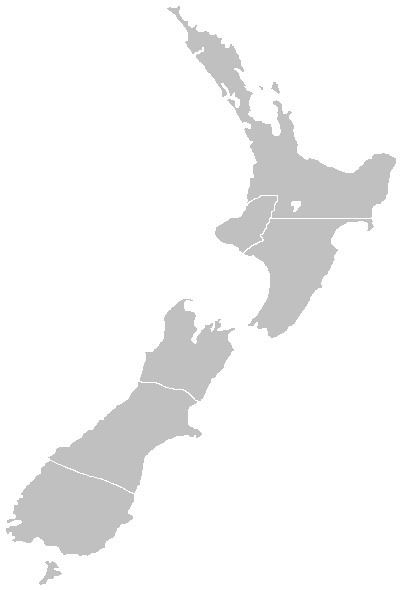 | ||
The New Zealand Constitution Act 1852 (15 & 16 Vict. c. 72) was an Act of the Parliament of the United Kingdom that granted self-government to the Colony of New Zealand. It was the second such Act, the previous 1846 Act not having been fully implemented.
Contents
The Act remained in force as part of New Zealand's constitution until it was repealed by the Constitution Act 1986.
The long title of the Act was "An Act to Grant a Representative Constitution to the Colony of New Zealand". The Act received the Royal Assent on 30 June 1852.
Background
The New Zealand Company, which was established in 1839, proposed that New Zealand should have representative institutions, and this was consistent with the findings of the Durham Report, which was commissioned during 1838 following minor rebellions in Upper and Lower Canada. The first settlement of the company, Wellington, briefly had its own elected council during 1840, which dissolved itself on the instruction of Lieutenant Governor William Hobson. The first New Zealand Constitution Act was passed in 1846, though Governor George Grey was opposed to its proposed division of the country into European and Māori districts. As a result, almost all of the Act was suspended for six years pending the new Act of 1852, the only operative part of the 1846 Act being the creation of New Zealand's first provinces, New Ulster Province and New Munster Province. In the meantime, Grey drafted his own Act which established both provincial and central representative assemblies, allowed for Māori districts and an elected Governor. Only the latter proposal was rejected by the Parliament of the United Kingdom when it adopted Grey's constitution.
Effect
The Act established:
By the Act, the provinces had the authority to pass provincial legislation, although the Governor had a reserve power of veto such legislation, and the right of the Crown to disallow provincial Acts within two years of their passage was preserved. Parliament was granted the power to make laws for the "peace, order, and good government of New Zealand" provided such legislation was not inconsistent with the laws of England.
Implementation
The first provincial elections were held during 1853. The first Parliament under the Act met in Auckland, at the time the capital, in May 1854. This session was concerned primarily with the issue of responsible government, or the ability of the Colonial parliament instead of the Governor to appoint its own ministers. Prior to the Act, the Executive Council consisted of Crown servants who were responsible to the Governor. A motion was passed almost unanimously affirming the ability of Parliament to appoint its own Executive Council members. Three members of the Assembly (and later one from the Legislative Council) were added to the Executive Council as ministers without portfolio under the leadership of James FitzGerald. The unofficial members soon resigned.
After fresh elections the 2nd Parliament met, and the new Governor, Sir Thomas Gore Browne, asked Henry Sewell to form the first responsible ministry.
However, the General Assembly did not have total control of the executive. The Governor retained reserve powers to disallow legislation and there was the authority of the Crown to disallow legislation even after the Governor had given his assent. These powers of reservation and disallowance were prerogative powers included in the Act. This power was limited by the Balfour Declaration of 1926, in that they were to be exercised only on the advice of New Zealand ministers. The powers were not continued by the 1986 Constitution Act.
The powers of the Assembly were given in the Colonial Laws Validity Act 1865, which stated that colonial legislatures had full powers to make laws respecting their own constitution, powers, and procedure.
Māori districts
Section 71 of the Act allowed for "Māori districts" where Māori law and custom were to be preserved, but this section was never implemented by the Crown. It was, however, used by the Kingitanga to justify claims of Māori self-governance during the 1870s and 1880s.
Amendments
The first amendment to the Act was made by the British Parliament during 1857. This amendment granted the New Zealand General Assembly the ability to amend or repeal all of the provisions of the Constitution Act except provisions such as the establishment of the General Assembly itself and the extent of its legislative powers.
The New Zealand Parliament did not gain total ability to amend the Act until 1947, when New Zealand adopted the Statute of Westminster 1931 with the Statute of Westminster Adoption Act 1947. The only remaining provision relating to the Parliament of the United Kingdom was the ability of the former imperial legislature to legislate for New Zealand at the New Zealand Parliament's consent. This occurred only once, for the New Zealand Constitution Amendment Act 1947 which adopted the New Zealand Parliament's New Zealand Constitution Amendment (Request and Consent) Act 1947.
A number of important amendments were made to the Act by the New Zealand Parliament:
Repeal
The Act was repealed by section 28 of the Constitution Act 1986 in New Zealand. By the time of its repeal, only 18 of the Act's original 82 sections remained, of which a number were regarded as no longer effective. In the UK it was repealed by the Statute Law (Repeals) Act 1989.
